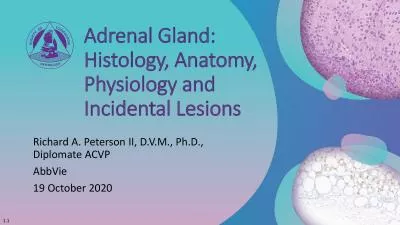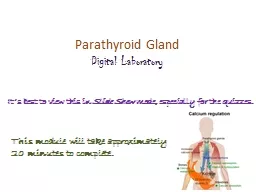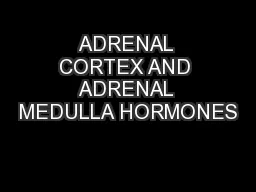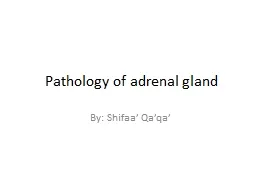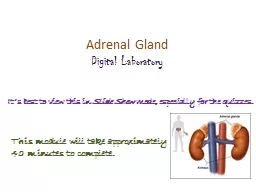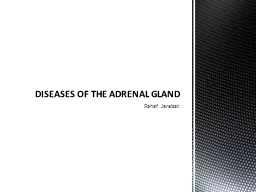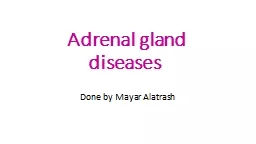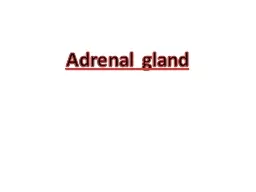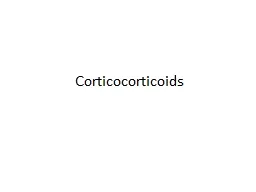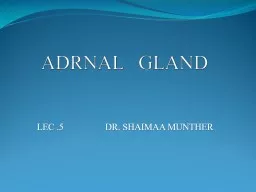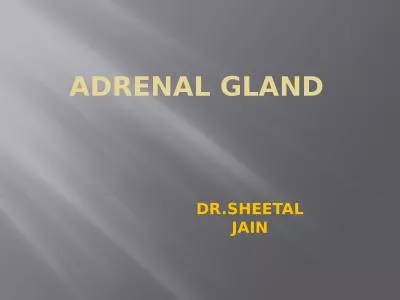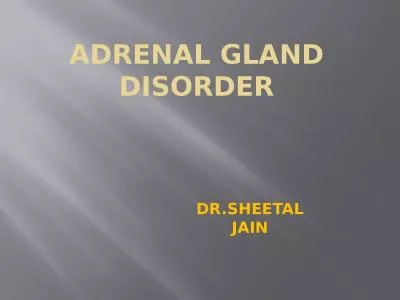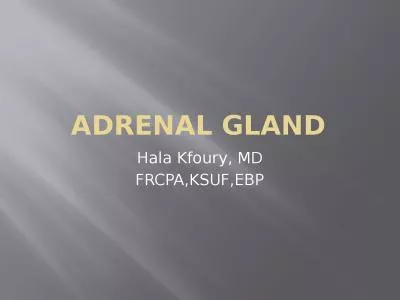PDF-Adrenal Gland
Author : blanko | Published Date : 2022-10-11
Histology Anatomy Physiology and Incidental Lesions Richard A Peterson II DVM PhD Diplomate ACVPAbbVie19 October 2020 11 The Adrenal Gland Most common endocrine
Presentation Embed Code
Download Presentation
Download Presentation The PPT/PDF document "Adrenal Gland" is the property of its rightful owner. Permission is granted to download and print the materials on this website for personal, non-commercial use only, and to display it on your personal computer provided you do not modify the materials and that you retain all copyright notices contained in the materials. By downloading content from our website, you accept the terms of this agreement.
Adrenal Gland: Transcript
Histology Anatomy Physiology and Incidental Lesions Richard A Peterson II DVM PhD Diplomate ACVPAbbVie19 October 2020 11 The Adrenal Gland Most common endocrine organ associated with che. Shedding Light on an Ambiguous Subject. Grand Rounds: September 25, 2015. Stephanie Gibson, MD Lisa Knight, MD. PGY-3 Assistant Professor of Clinical Pediatrics USC Pediatric Endocrinology. The most common form of Congenital Adrenal Hyperplasia (CAH) results from a deficiency of which of the following?. Digital Laboratory. It’s best to view this in . Slide Show . mode, especially for the quizzes.. This module will take approximately 20 minutes to complete.. After completing this exercise, you should be able to:. Adrenal . glands. . are. . two. . pyramid. -. shaped. . structures. . that. sit on top of . the. . kidneys. , . one. . gland. . each. . kidney. .. Adrenal . glands. . release. . hormones. By: . Shifaa. ’ . Qa’qa. ’. adrenal glands:. cortex . medulla. ADRENOCORTICAL. HYPERFUNCTION. (HYPERADRENALISM). Cushing syndrome. hyperaldosteronism. . adrenogenital. or . virilizing. . syndromes. It’s best to view this in . Slide Show . mode, especially for the quizzes.. This module will take approximately 40 minutes to complete.. After completing this exercise, you should be able to:. . identify, at the light microscope level, each of the following:. Pyramidal in shape. 3- 5 cm in height , 3 cm in width , less than 1 cm . thicK. , Mass . 3.5 - 5 g . The . adrenal gland is divided into 2 areas, the cortex and medulla. . The cortex is divided into 3 areas: GFR. Alatrash. . Anatomy . Pyramidal in shape. 3- 5 cm in height , 3 cm in width , less than 1 cm thick, Mass 3.5 - 5 g. The adrenal gland is divided into 2 areas, the cortex and medulla.. The cortex is divided into 3 areas: GFR. The adrenal glands are . small. , . yellowish. organs that rest on the upper poles of the kidneys in the . Gerota. fascia. . The right adrenal gland is pyramidal, whereas the left one is more . crescentic. Erin Pein, RN-BSN. What is Adrenal Insufficiency?. AI is a medical condition in which the adrenal glands cannot produce glucocorticoid hormone Cortisol. Cortisol is needed for the body to maintain normal energy supply, fluid and electrolyte balance, blood pressure, blood sugar and the body’s reaction to physical stress such as illness or injury.. The medulla secretes . catecholamines. , whereas the . cortex secretes two types of corticosteroids (. glucocorticoids. and . mineralocorticoids. ). Corticosteroids . The . corticosteroids. bind to specific . . Adrenal. . Anatomy. . &. . Physiology. The adrenals are endocrine organs that sit on top of each kidney. There are 2 adrenal glands that lie anteriorly to kidneys. .. . Each is embedded in a capsule of fat. ADRENAL GLAND. Adrenal Gland Location. The . Adrenal Glands are found on top of each kidney. Even the name “Adrenal” directly refers to their location: (. Latin: ad– “near” and . renes. – “kidneys.. ADRENAL GLAND. ADRENAL GLAND. HORMONES. HORMONES. CUSHING SYNDROME CAUSE. Cushing syndrome is a rare disease that results from having too much cortisol hormone in the body. In some cases, Cushing syndrome develops from long-term or overuse of steroid medications(medicines that act like cortisol in the body). In other cases, the body itself produces too much cortisol. This overproduction can happen for several reasons, including the presence of tumors(abnormal growths) such as a:. , MD. FRCPA,KSUF,EBP. Adrenal Glands. The . adrenal glands: paired endocrine organs: cortex and medulla: 4 . Three layers in the cortex:. Zonaglomerulosa. Zonareticularis. abuts the medulla. . Intervening is the broad .
Download Document
Here is the link to download the presentation.
"Adrenal Gland"The content belongs to its owner. You may download and print it for personal use, without modification, and keep all copyright notices. By downloading, you agree to these terms.
Related Documents

